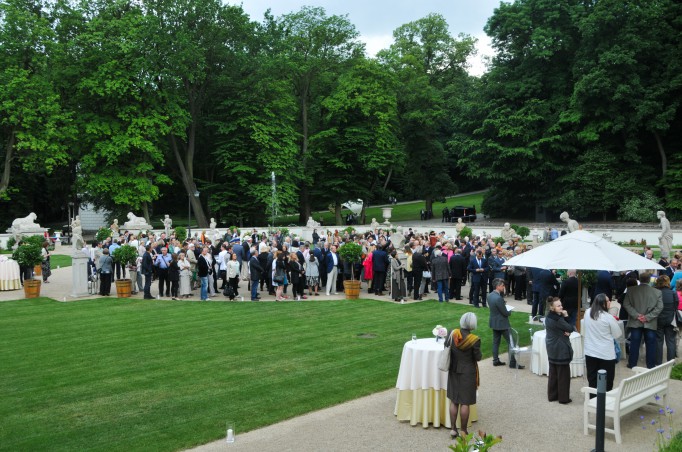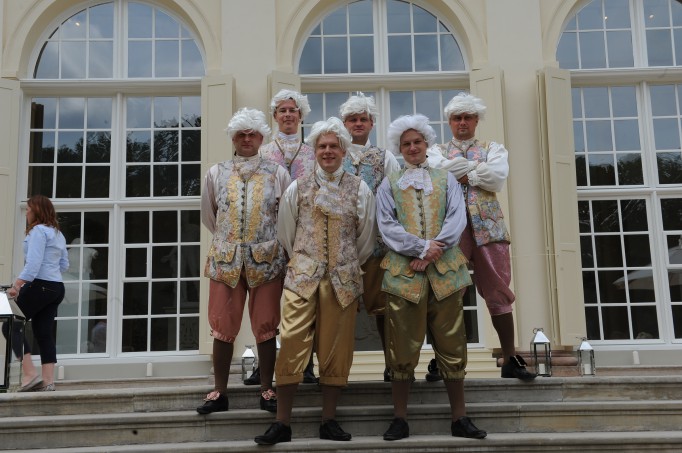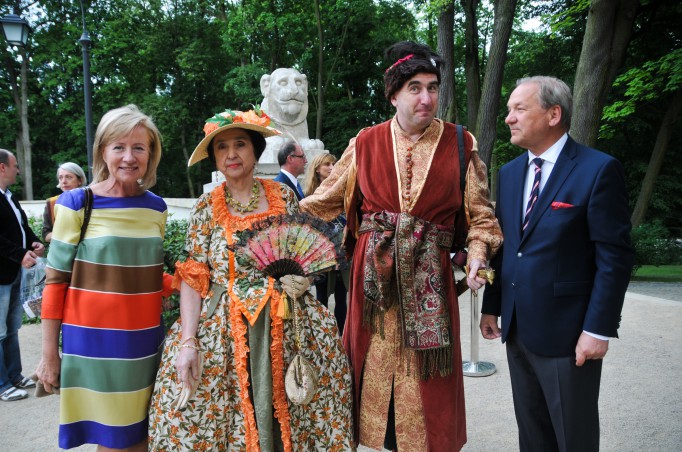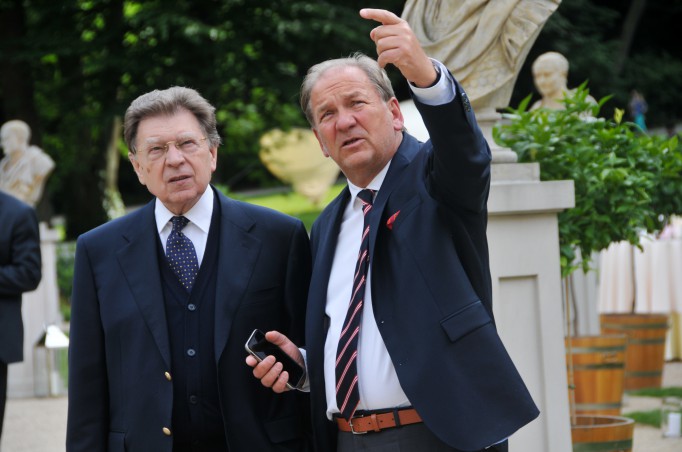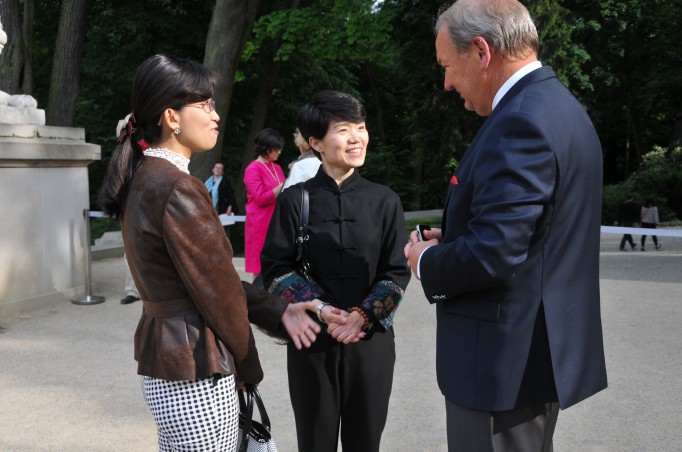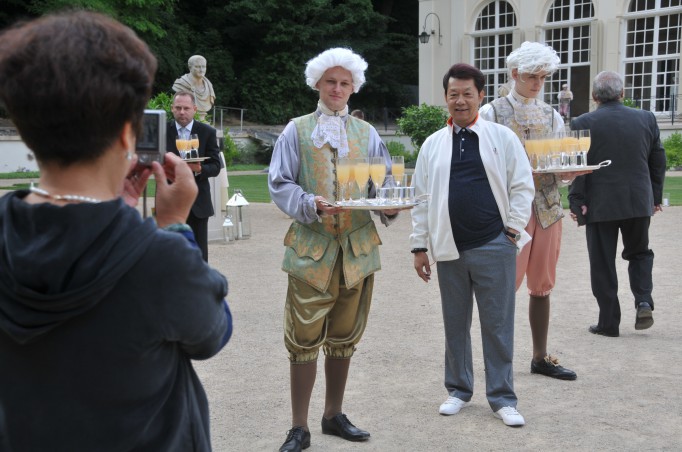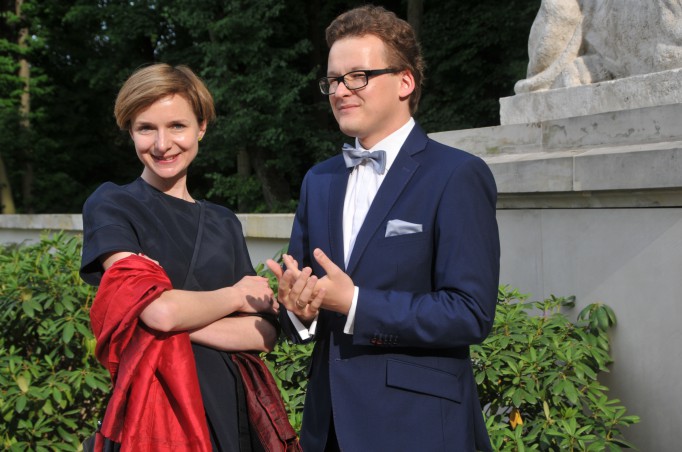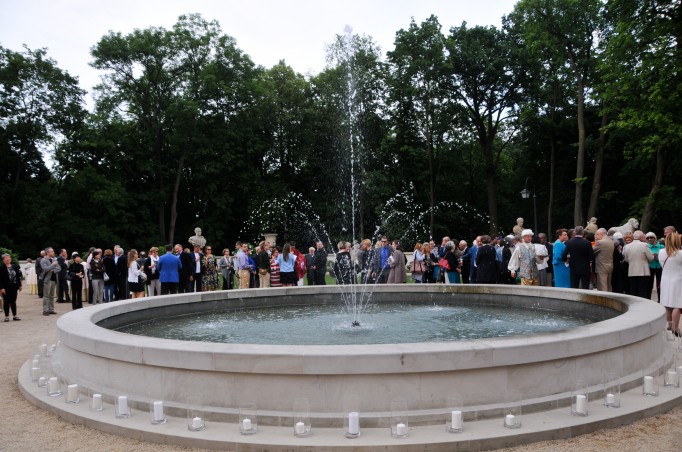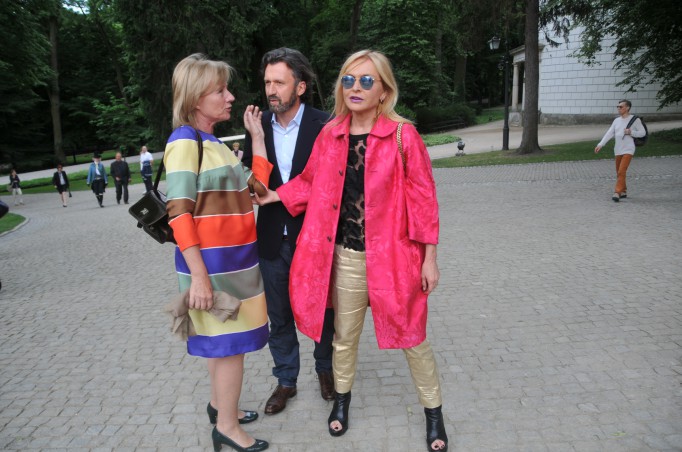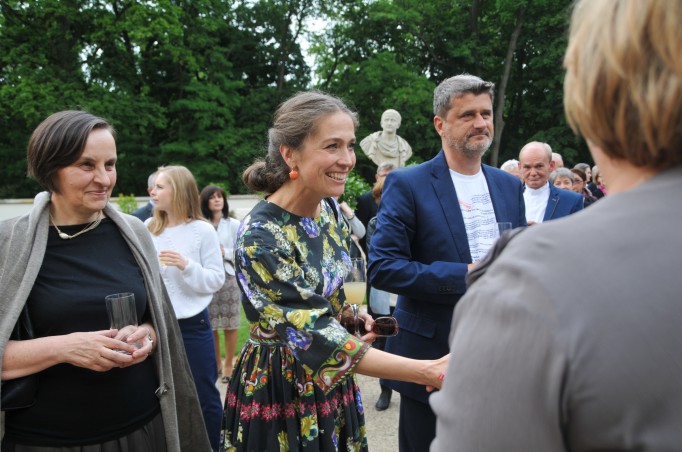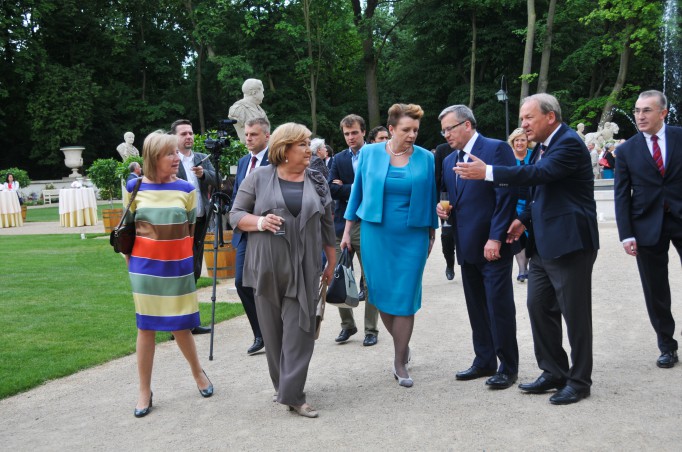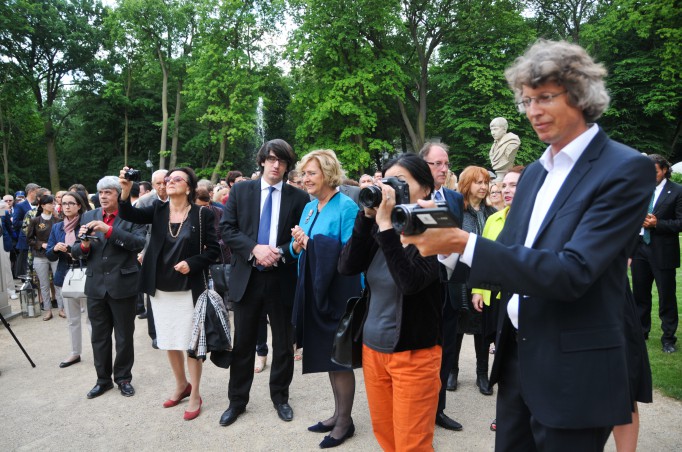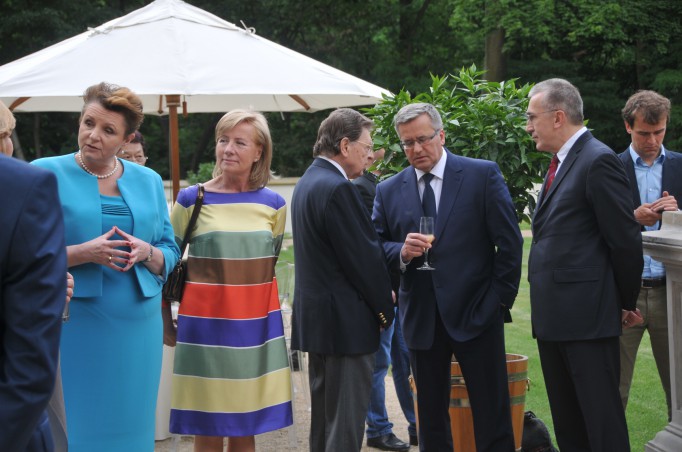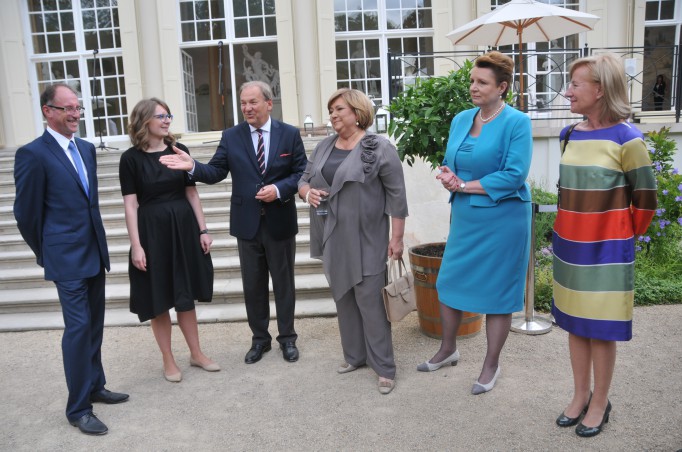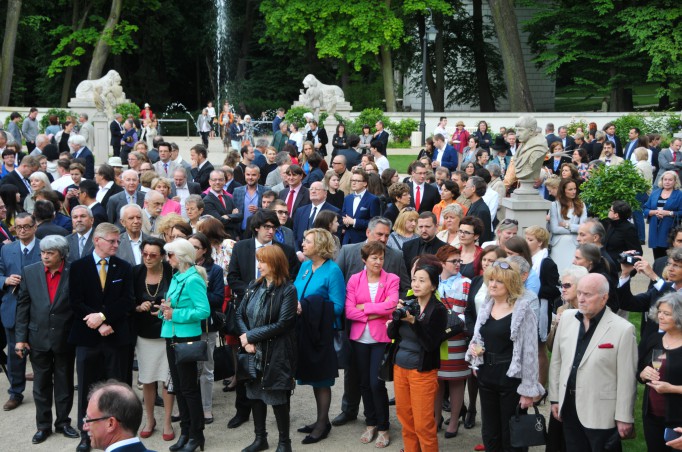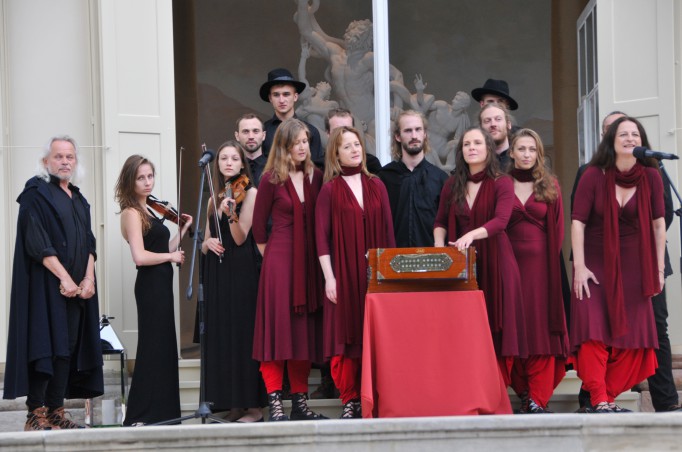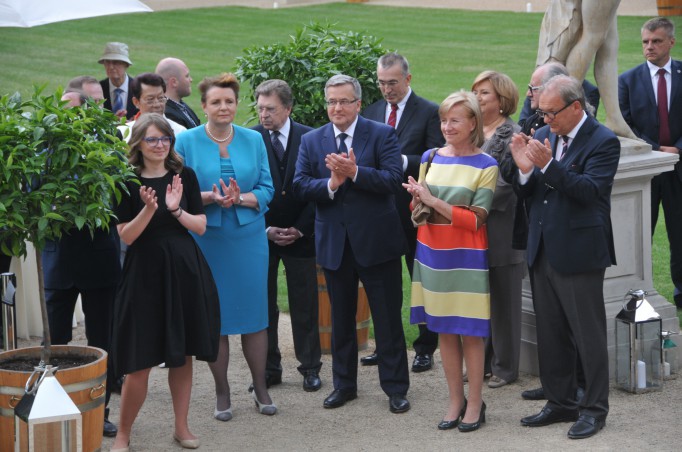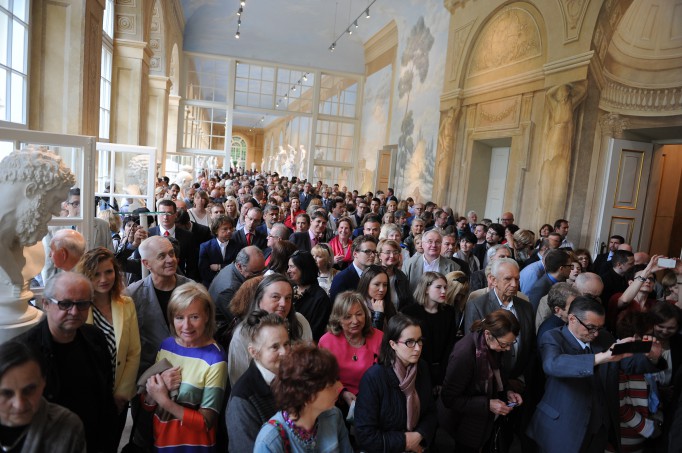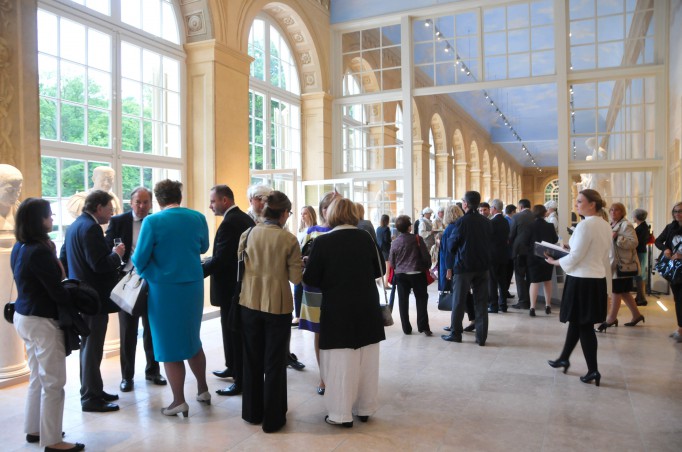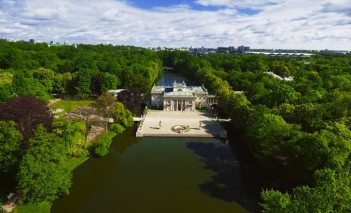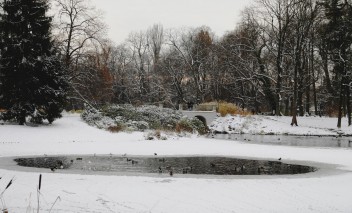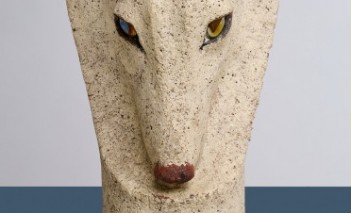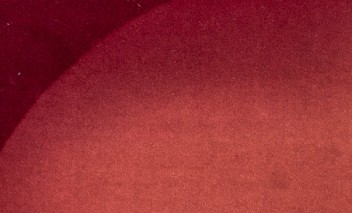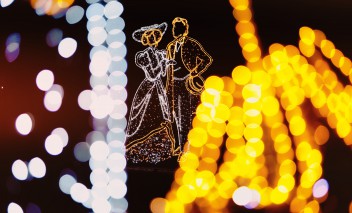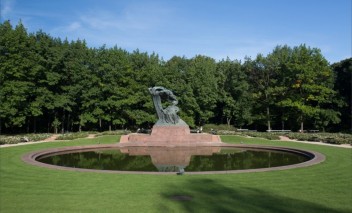Preview of the Royal Sculpture Gallery in the Old Orangery
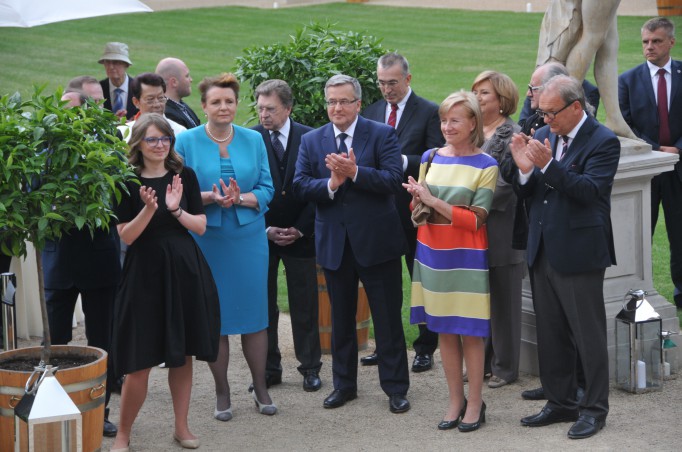
The Royal Sculpture Gallery already opened! During the preview, the plaster casts of Ancient sculptures of Laokoon Group were contemplated by, among others, the President of the Republic of Poland, Bronisław Komorowski, and his Wife, the Minister of Culture and National Heritage, professor Małgorzata Omilanowska as well as representatives of art, science and media. The official opening was accompanied by the “Pythian Oratorio” of the Gardzienice Theatre.
A short video on the official opening of the Royal Sculpture Gallery was prepared by the Embassy of Norway in Poland. Thank you and enjoy watching!
The magnificence of the Royal Łazienki, which were founded not only to satisfy the pleasures of the King, but also with a view to develop a modern version of the Polish state, has been restored – Bronisław Komorowski, the President of the Republic of Poland, said. He congratulated on the achievements to date and thanked the Management of the Royal Łazienki for the revitalization of the monuments of the former summer residence of King Stanisław August.
I believe that the results of this effort, that can be noticed with the naked eye in almost every corner of Łazienki, are achievements which will serve the present-day Polish state through the restoration of the pride of the past but also by encouraging all of us to think that not only tradition but also a persistent focus on modernity and modernisation of the state can guarantee greatness in the future – Bronisław Komorowski said.
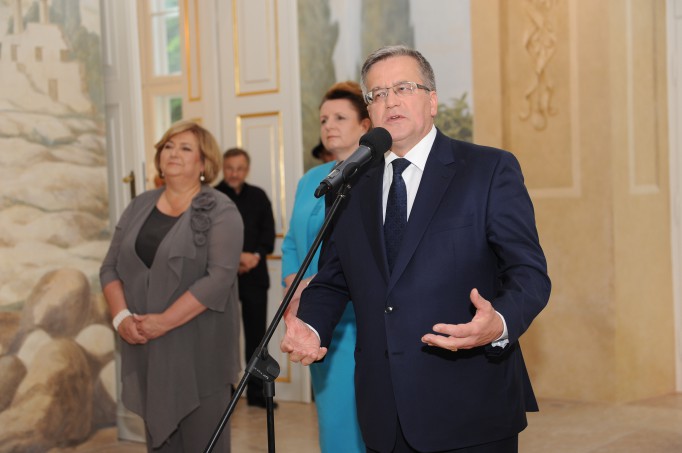
It is with admiration that the Minister of Culture and National Heritage, professor Małgorzata Omilanowska, spoke about the Old Orangery together with its Royal Sculpture Gallery. Stanisław August collected casts of Ancient sculptures because he dreamt of offering Warsaw a place reminding of Ancient times. The collection has never been fully completed; with time, the sculptures were moved to other places, some were destroyed, and some survived. Nevertheless, we decided to bring back not only the reconstructed paintings of Jan Chrystian Kammsetzer to this interior, but also the Sculpture Gallery – the Minister of Culture and National Heritage stressed.
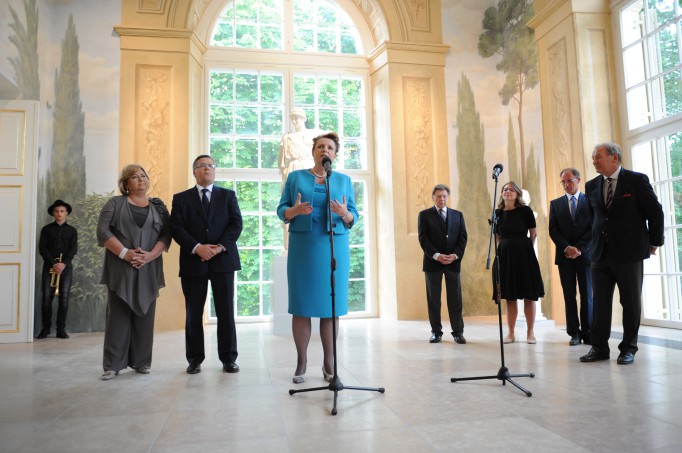
Today, the symbol of the Ancient world – the Royal Sculpture Gallery – is returning to Łazienki - Tadeusz Zielniewicz, Director of the Royal Łazienki Museum, says. This festive moment makes the best opportunity to express gratitude to all those who support the Royal Łazienki Revitalization Programme and implement it with us. We have realised more than what we promised in autumn 2010. We have been able to raise a huge budget which exceeded the amount of 130 million zlotys. Half of the funds was provided from European Funds and the Norway Fund – he pointed out.
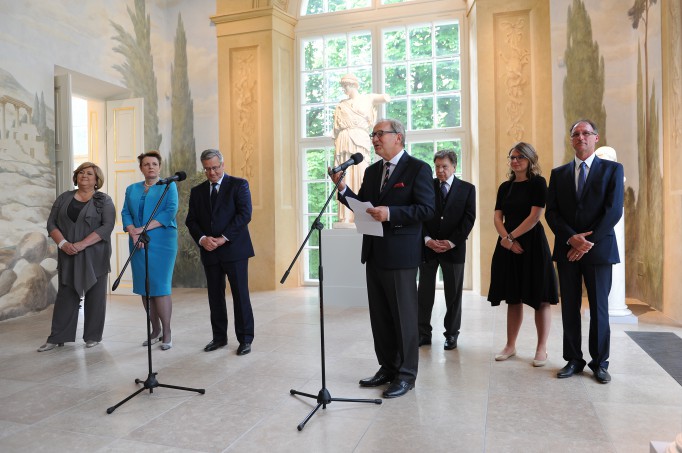
The guests at the preview, which was marked by the “Pythian Oratorio” performed according to the texts of the Seven Sages and the Delphic Oracle (the spectacle was produced by an outstanding director and creator of “Gardzienice”, Włodzimierz Staniewski), included politicians, figures of culture and science.
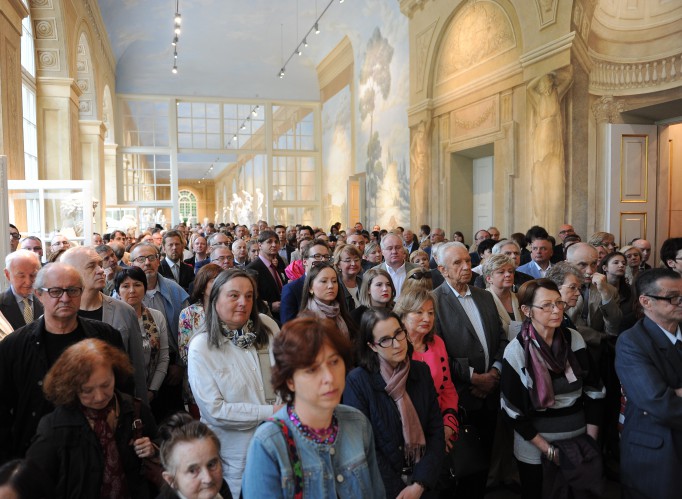
Apart from the President and his Wife, the representatives of the Ministry of Culture, the Royal Łazienki Museum Council and sponsors of the Museum, the event was attended by international guests from Germany, France, Holland, Great Britain, Greece, Belgium, Spain and the Czech Republic. Diplomats, including Ambassadors of Norway and the Kingdom of the Netherlands, were present too.
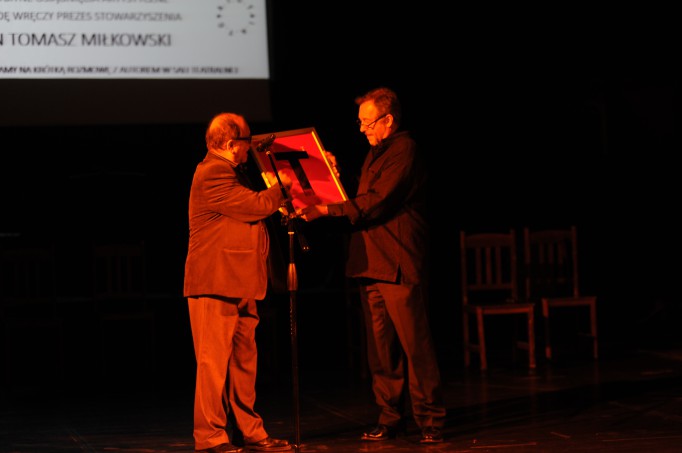
Before the performance of the “Pythian Oratorio”, Włodzimierz Staniewski received the annual Tadeusz Boy-Żeleński Prize awarded by the Klub Krytyki Teatralnej (Theatre Critic Club), the Polish section of the International Association of Theatre Critics (AICT/IATC). Inviting the audience to watch the spectacle, the creator of “Gardzienice” said that The Royal Theatre saw the play of presumably the greatest experimentalist of the Polish theatre, Wojciech Bogusławski, so it seems reasonable to give space to experiments within these monumental walls.
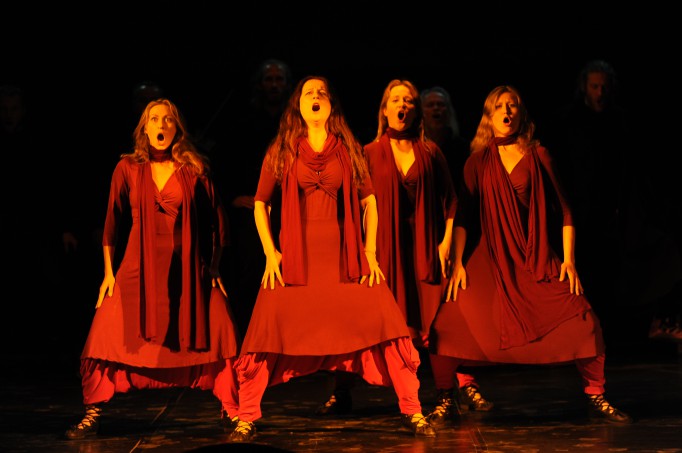
King Stanisław August was one of the most significant patrons of art and collectors in the 18th century Republic of Poland. During thirty years of his reign, Stanisław August raised a collection of paintings, sculptures, prints and numismatic items made by both Polish and European artists. Together with the architecture of the Royal Łazienki this collection formed a complete work to become – according to the King’s idea of 1792 – a first modern public museum.
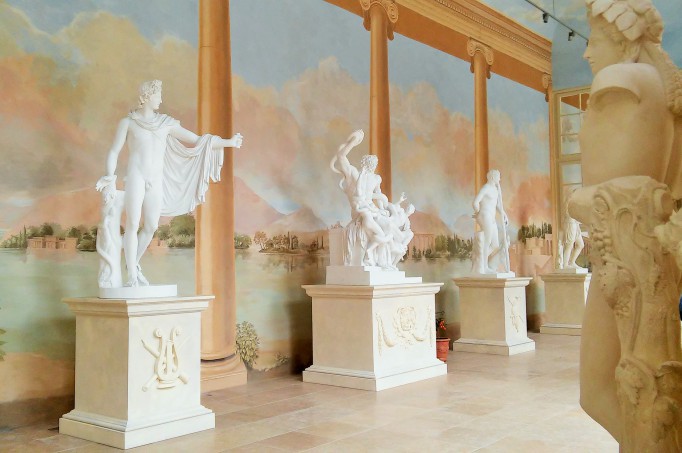
Beside the paintings in the Palace on the Isle and the Gallery of Prints in the White Pavilion, the Sculpture Gallery in the Old Orangery is one of the main places where the royal collections are displayed. From the beginning of his reign Stanisław August gathered both marble sculptures as well as plaster copies of the most famous Ancient and modern works. Some of them were ordered with a view to complement the conceptual plan of royal residences, such as the sculpture of Farnese Hercules, Apollo Belvedere in the Ballroom of the Palace on the Isle or the statues of the kings in the Rotunda – the pantheon of Polish rulers. These plaster casts were the most numerous in the royal collection – a group of a didactic character counting 563 works according to the inventory dated 1795.
The greatest sculptures of the Royal Gallery in the Old Orangery include the renown Laokoon Group (made by Agesander, Athenodoros and Polydoros according to a design by Pliny). It represents the scene from ”Aenid” by Virgil where a Trojan priest Laokoon and his two sons have been attacked by sea serpents. It was divine punishment for Laokoon’s attempt to warn the Trojans of the ruse of the Achaeans. The plaster cast of the original sculpture, which can be found in the Vatican Museums, was made for the Royal Łazienki by specialists of the Berlin Glyptotheque. Copies of the masterpiece are displayed in European museums, including the Rijksmuseum in Amsterdam, the British Museum in London and Uffizi Gallery in Florence.
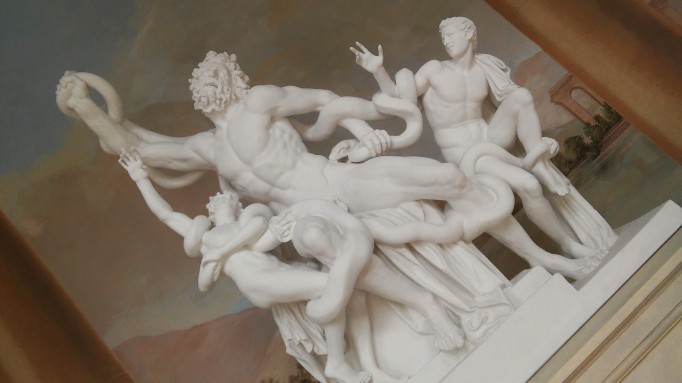
Izabela Zychowicz, who leads the work of the Department of Art in the Royal Łazienki, points out that the plaster casts of sculptures from the Ancient world are presented – just like in the times of King Stanisław August – at the background of architecture designed in the illusionistic painting style with an idyllic Italian landscape. The so-called Kammsetzer Colonnade (1787-1788) – royal architect coming from Dresden – has been for decades regarded by historians of art as a project that has never been realised. Only discoveries made in the years 2012 and 2013 during restoration works revealed paintings that survived from the 18th century under the wall plaster of the Old Orangery. The detail of Kammsetzer’s designs allowed not only to carry out the restoration works but also to recreate the Sculpture Gallery according to the royal concept. As a result, today after 200 years the concept of the “ideal museum” was revived – Izabela Zychowicz stressed.
Foto Gallery:
